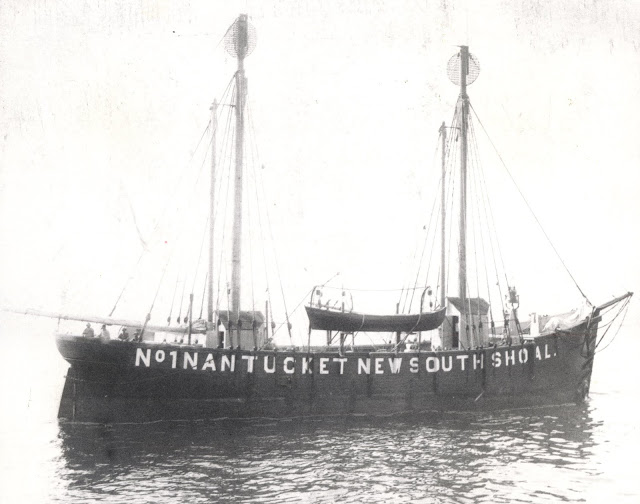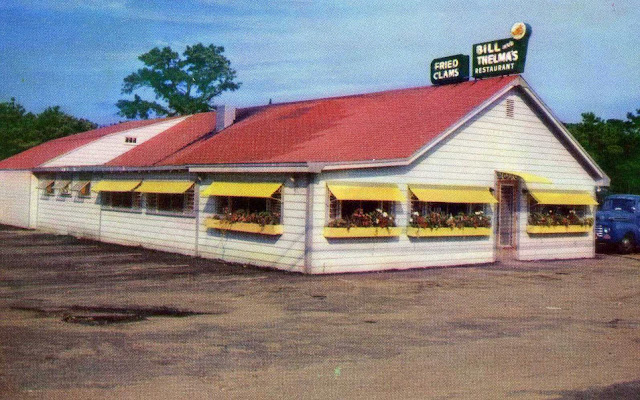Cape Cod has more than its fair share of historic homes. Many are cared for by historical societies, some have been renovated and are now private. A few of these became iconic through the stories behind them. One of the biggest Cape Cod icons of the 20th century starred in a best-selling book. It showcased the rustic dream of living on a beach. In a fitting piece of irony that icon became a victim of the very sea that it romanticized in the book. It was the Outermost House and this is the story behind the icon.
The story begins in 1925. Struggling author Henry Beston purchased fifty acres of beach roughly two miles south of the Coast Guard station in Eastham. He then asked his neighbor Harvey Moore a favor. Could he build him a small 20x16-foot, two-room shack in those Eastham dunes? Moore, a carpenter by trade, and his crew obliged and created a basic domicile consisting of a bedroom and kitchen/living room. After digging a well in the sand, and having the necessary outhouse built the job was done.
Beston intended to only spend a fortnight in the dune shack he called Fo'castle as a respite from his struggles as a writer and the lingering effects of World War I. However the sand and the sea called to him so much that he extended his stay.
After World War I Beston, born in Quincy, Massachusetts, began visiting Cape Cod to see friends. He stayed, among other places, at a cottage on Salt Pond in Eastham. Beston had a desire for a place of his own leading to him ask Harvey Moore to create it for him.
Henry Beston ended up spending an entire year in Fo'castle in 1926-27. Alone with his thoughts he wrote of what he saw and heard in his solitude. Despite writing several notebooks worth of material Beston initially had no intention of turning them into a proper manuscript. It turns out his hand might have been forced into creating one of the masterpieces of 20th century literature.
In 1927 Beston proposed to his girlfriend, accomplished writer Elizabeth Coatsworth. Believing in the importance of his manuscript Elizabeth told Beston: "No book, no marriage." He cultivated his collection of notes into The Outermost House. Beston gave it this title due to his belief that his shack on the Great Beach was the 'outermost' in the eastern United States. The book was published in October 1928. Henry and Elizabeth were married in June 1929.
The Outermost House, released through Doubleday and Doran, was Beston's eighth published book. The initial sales were good and Beston even went to Europe to help promote it. In the first few years after the publishing of the book he would routinely pay visits to his beloved Fo'castle while also living in Hingham.
 |
| The Outermost House Cover, on sale at Amazon. |
A visit to Damariscotta Lake, Maine to see his friend, painter Jake Day, saw Beston, Elizabeth and their two daughters head north. The family bought a parcel of land called Chimney Farm in the town of Nobleboro, Maine in 1931 and by 1933 they had permanently relocated there. Though he would occasionally return to Cape Cod in the coming decades, Beston for all intents and purposes was a Maine resident into retirement.
So what of Fo'castle? The shack that became an icon of 20th century American literature? Sadly its position on the Great Beach of Eastham put it in danger from the get-go. It was built only thirty-feet in from the sea. Erosion rates have always been high on the Outer Cape. On the ocean-side of Eastham where Fo'castle resided the erosion rate was an average of 3.3-feet per year between 1865-2015.
In March 1931 a large Nor'easter slammed Cape Cod, destroying two cottages on the Eastham dunes and pushing another into the Nauset Marsh. Another storm in January 1933 left Fo'castle only seven-feet from the bluffs edge. Beston himself expressed concern over his Outermost House succumbing to the elements. It was moved back from the receding bluffs soon thereafter.
The years passed and the erosion continued. During the summer of 1948 once again the Outermost House found itself in danger. This time not only was it moved inland 200 yards, it was also reinforced and re-shingled to better protect it from all of the dangers that a shack on the beach might face. The move actually changed the direction Fo'castle faced. This was something Beston noticed upon a later visit to the shack as he quipped that somebody had 'moved the ocean.'
 |
| Henry Beston (Henry Beston Society) |
Though he grew distant from Cape Cod in his later years Beston remained important. He wrote the introduction for the 300th anniversary of the incorporation of his second home Eastham in 1951. The Outermost House author might have become settled in Maine but the shack itself remained. For those heading along Rt. 6 through Eastham one could lay eyes on Fo'castle out on the sandy spit in a clearing near the Eastham Town Hall.
Beston retained ownership of the Outermost House throughout the 1950's. Though he was rarely there he allowed friends to stay there and bask in some of the inspiration he had relished. In 1959 he donated the shack and the fifty acres he owned to the Massachusetts Audubon Society. The nonprofit organization began renting the famed beach cottage to bird watchers among others. It is believed that Beston's donation and the general importance of The Outermost House and Fo'castle itself may have helped to spur on the creation of the Cape Cod National Seashore.
The Seashore was created in 1961. Three years later in 1964 Fo'castle was designated a national literary monument by the United States Government. That same year on October 11, 1964 was Henry Beston Day at the Seashore in conjunction with the Audubon Society, National Park Service, and Massachusetts Governor Endicott Peabody. The ceremony was a success with a parade of beach buggies driving guests out to the shack. There would be an interpretive trail-side exhibit in the area surrounding the Outermost House for those venturing out to see it. It was a fitting tribute to a man that had put the natural beauty and wonder of Cape Cod on display for all of the world to read. This ended up being Henry Beston's last trip to the Cape.
Beston died April 15, 1968 at his home in Nobleboro, Maine only a few weeks shy of his 80th birthday. His death sparked renewed interest in The Outermost House the book and shack. People traversed the Great Beach to gaze upon the inspiration for Beston's greatest work. Though erosion had been its greatest threat it was something totally unforeseen that spelled the end of Fo'castle.
Between February 6-7, 1978 one of the most historic blizzards in New England history caught the region mostly by surprise. It was snow that covered most of the region, however it was wind and storm surge that affected Cape Cod. The high tide of 16-feet tore through the Outer Cape, briefly making the area north of Fort Hill in Eastham an island. Coast Guard Beach in Eastham was decimated. The vast 350-space parking lot collapsed forever changing the landscape of one of the Cape's most popular beaches. South of the Coast Guard station Fo'castle was pulled into the ocean by the raging waves. It was pushed back into the marsh and eventually torn to pieces.
 |
| The end of the Outermost House (Marilyn Schofield) |
The Outermost House was claimed by the very sea that Henry Beston romanticized in his book. Today there are no remains of the shack on the sandy spit south of Eastham's Coast Guard station. Since 1969 the beach has lost over 300-feet of shoreline making the Outermost House's original resting place under water now.
Despite the changing shoreline due to erosion the solitude of the beaches on the Outer Cape are still soothing. They are a tremendous reminder of a simpler time on Cape Cod and in the world. They are also a reminder of how small we as humans are in this world. Henry Beston captured much of the allure and spirit in the Outermost House. Luckily one can still enjoy the expanse of sand and sea even if Fo'castle itself is all but a memory.
------------------------------------------------------
In Their Footsteps: Cape Cod History - Bill Cox's Sea Grill
Photo Prints available here: Smug Mug.com
Be sure to check out my website: Christopher Setterlund.com












